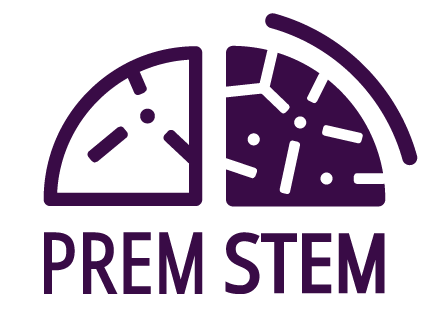Our research explained
What are stem cells and why are they used in research?
What are stem cells?
PREMSTEM aims to validate the use of stem cells as a regenerative therapy for brain injury related to being born preterm. To ‘rebuild’ the damaged areas of the brain, our scientists are using human mesenchymal stem cells (H-MSCs). H-MSCs are taken from umbilical cord tissue and are very different to human embryonic stem cells (hESC).
But what are stem cells? Check out our animation for a quick overview!
Playlist
2:36
2:36
2:36
2:36
2:36
As we saw in the animation, stem cells have two special characteristics which set them apart from other kinds of cells:
- They can make copies of themselves.
- They can turn into specialised cells in different parts of the body, from our skin and heart to our liver and brain.
Where do stem cells come from?
Stem cells can be found in different parts of the body, including the embryo, umbilical cord tissue and blood, the placenta, bone marrow and fat, the brain and skin. Stem cells can also be generated in the lab from cells in specific tissue such as the skin (read more below about induced pluripotent stem cells).
In PREMSTEM we are using a type of stem cell to do our research called human mesenchymal stem cells (H-MSCs) which come from donated umbilical cord tissue. They’ve been authorised for use in our project by the donor.
How are stem cells different to other cells?
Most cells in the body have a specific job, for example to provide structure or to send and receive signals. Stem cells are different because they don’t yet know what their purpose is. Stem cells in adult tissues stay as stem cells until the body needs them for another purpose. This could be to transform into another type of cell with a specific role, or to regenerate or grow a particular tissue by creating more stem cells or giving instructions to other cells. Under the right conditions, stem cells can support the body to repair itself when injured or indirectly help to rebuild damaged tissues.
What are the different types of stem cells?
The main types of stem cells are:
- Totipotent stem cells – the very first cells that develop when an egg is fertilised. Totipotent stem cells are the most powerful in the sense that they can become any other cell in the body.
- Pluripotent stem cells such as those in the embryo. They can make almost all other cells in the body.
- Multipotent or adult stem cells. They can become specialised cells in multiple tissues or organs.
- Oligopotent stem cells. They can become cells in a specific tissue.
- Unipotent stem cells. They can only become another cell that is the same as their own type.
There is another type of stem cell which is used in research – induced pluripotent stem cells. They are adult cells that have been engineered back to the pluripotent stem cell state, meaning they can divide and become any type of cell in the body.
Why are stem cells used in medical research?
Stem cells are used in medical research because of their potential to help the body combat injury and disease. For example, they can indirectly help to repair damaged tissue or stop responses to injury that can make things worse for the patient.
Stem cells could be important for finding new ways to treat currently incurable diseases. Some types of stem cells can multiply and transform into other kinds of cells in our body. They can also give instructions to other types of cells in the body, and this can have positive effects.
Do stem cells used in PREMSTEM get screened before they’re used in research?
In PREMSTEM, the quality of the stem cells is controlled both during and after their manufacturing process through strict and specific analytical testing aiming to assure their efficacy and safety before use. Stem cells are usually characterised for identity, viability, purity and proliferative capacity. The results of the testing must meet predefined acceptance criteria to guarantee a reproducible level of quality for every batch manufactured.
are stem cells safe to use as a regenerative therapy?
There is a lot of clinical evidence to support this. Stem cells have already been applied in studies focused on brain injuries of infants born full-term and in children with established neurological disorders. Pre-clinical studies such as those undertaken in PREMSTEM have been less frequent. Our Ethics Advisory Board helps us to address all the ethical, legal, social, and safety issues involved in these research and biomedical activities.
More resources
Visit the Cerebral Palsy Alliance website to learn more about stem cells in their Science Behind Stem Cells and Brain Injury video series.
